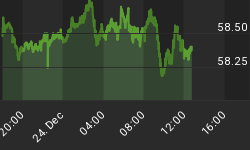In its initial version, Aggressive was an equal-weighted portfolio derived from two different quantitative stock screens, based on companies that trade on U.S. exchanges. Each screen produced an exceptional trading plan by itself, but when the two were combined, the volatility of returns was reduced without much degradation of total returns. This was because their backtested, detrended equity curves have relatively low correlation. Through experimentation and backtest, I have found a simplified "one screen" method that produces slightly improved results, and in my opinion, simpler is usually better.
Information is as of the close on May 9, 2008.
Model Allocation
Based on beginning with a $100,000 portfolio at inception, these are the current weights and holdings. In a previous update, I switched the initial target from 5% buy weights in each position, or 10 positions from each screen, to 10% buy weights per position, or 5 positions from each screen. In the last post, I took a double position in one stock Fairfax Financial (FFH), because it qualified for both screens. See my previous post on this system. I am presenting the existing model allocation in ticker order, instead of screen name order, because the newer, simpler model will use only one screen. The portfolio weights are shown behind the ticker symbol, and are rounded to the tenth of a percent.
American Physicians (AMPH) 9.7% weight
Compton Petroleum Co (CMZ) 10.1% weight
Fairfax Finl Hld Sub (FFH) 16.7% weight
Gencor Industries In (GENC) 12.4% weight
Koppers Holdings Inc (KOP) 9.7% weight
Quaker Chem Cp (KWR) 8.8% weight
Patterson-Uti Energy (PTEN) 11% weight
Tecumseh Products Co (TECUA) 10.8% weight
Olympic Steel, Inc. (ZEUS) 11.2% weight
The portfolio is 100.4% long, or cash at -0.4%.
Returns
Based on beginning with a $100,000 portfolio at inception.
Equity: $102,385.25
Gain, Past 4 Weeks +5.80%
Gain, Year to Date +1.56%
Gain, Since Inception at 11/26/2008 +2.39%
One stock, KWR, in the Aggressive portfolio went ex-dividend in the past four weeks. Total dividends for the model portfolio were $71.99.
Changes To Model Allocation and System Weights
Through experimentation and backtest, I have found a simplified "one screen" method that produces slightly improved results over the original blend of two screens. The new screen combines two momentum filters with a valuation sort order, holding the cheapest stocks that meet the momentum requirements. I have tested various holding counts and settled on the top ten for my model portfolio tracking. Counts of five through twenty were tested with robust results, the main response being a reduction in volatility as more stocks were held, but returns diminished slightly and transaction expense increased as well. The new model allocation is a 10% holding of each of the following stocks, sorted by Price/Sales ratio (ascending).
Chiquita Brands International, Inc. (CQB)
IPC The Hospitalist Company, Inc. (IPCM)
Unifi Inc (UFI)
Stepan Co. (SCL)
BJ's Wholesale Club Inc (BJ)
Celestica, Inc. (CLS)
Owens and Minor Inc (OMI)
SIAC Inc (SAI)
Companhia Brasileira De Distribuicao (CBD)
Laclede Group Inc (LG)
If this system were to be initiated today, the target allocation would be a buy for 10% weight holdings of each stock listed.
Tracking
All existing holding will be sold Monday morning, market at open. The target allocations based on 10% holdings and Friday's closing prices will be bought Monday morning, market at open.
Commentary
For those interested in a less diversified, more aggressive approach, holding only the top five from the previous list would provide that. I personally think there's little to be gained in return, and a lot to be "gained" in terms of volatility, from that technique.
Here are the "next five" on the list, for those interested in holding a larger, more diversified set of risks:
Hanger Orthopedic Gp (HGR)
Costco Wholesale Corporation (COST)
Ruddick Corp. (RDK)
Olympic Steel, Inc. (ZEUS)
Crown Holdings Inc (CCK)
The most passive approach that could be taken with this screen is to view the list merely as interesting candidates for further evaluation. I prefer using other initial screens when taking this approach, however.
There is also an "active trader" approach that could be initiated with these lists. By keeping these stocks on a watch list and monitoring them for breakouts or "runaway" conditions, they could present day- or swing-trade opportunities for the trader who is capable of monitoring the markets intraday. For example, I might consider a day with range of double a recent average (20 day, perhaps) and a close high in the range, or a gap up, a "runaway" condition if volume were higher than a recent daily average and a new high were made. If I were trading this approach, I would set a tight initial stop based on a one- or two-day price low, and use a wide trailing stop to let the market run.
If you'd like to become of member of The Rempel Report, you can register here. At The Rempel Report, I track model portfolios for four different mechanical trading systems, as well as my personal portfolio, and disclose all results (good and bad) at regular intervals. Members receive email notification of new posts and can contribute to the site through comments. Registration is still free!
















